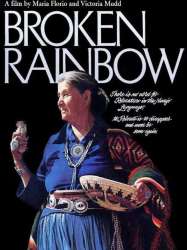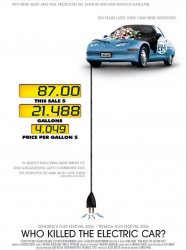One Cup is a film of genre Documentary
One Cup (2006)

If you like this film, let us know!
- Infos
- Casting
- Technical infos
- Photos
- Videos
- Film quotes
- Characters
- Music
- Awards
Length 28minutes
Genres Documentary
One Cup is an Australian short documentary film, produced and released by Scarab Studio and Mutiny Media. Its crew included Dominic Allen, Joel Betts, Nicholas Hansen, Greta Costello, Dylan Tromp.
Filmed in the mountains of Timor-Leste in January 2006, One Cup depicts the struggles and health concerns of coffee farming communities in Timor-Leste, Asia. Featuring then Foreign Minister José Ramos-Horta, Oxfam Program Director Keryn Clark and Timorese coffee farmers, One Cup attempts to illustrate benefits offered by the international fair trade system.
Unlike the documentary film Black Gold (2006), which looks at the issues around fair trade One Cup attempts to show positive benefits of the fair trade system.
Comments
Leave comment :
Suggestions of similar film to One Cup
There are 8968 with the same cinematographic genres, 1248 films with the same themes (including 93 films with the same 3 themes than One Cup), to have finally 70 suggestions of similar films.If you liked One Cup, you will probably like those similar films :

Voices of Transition (2012)
, 1h5Origin France
Genres Documentary
Themes Environmental films, La mondialisation, Films about the labor movement, Documentary films about business, Documentary films about environmental issues, Documentary films about technology, Documentaire sur le monde du travail, Disaster films
Rating75%





Using interviews and overlays of graphics and text, the film presents the current problems facing industrial agriculture. It explores why in the interviewees' view the current industrial model is not up to the task of feeding the world's people. According to the film every calorie of energy contained in a food source currently takes between 10 and 20 calories of crude oil in the production of fertilizers and transportation to produce, leading to a strong dependence of the cost of food on oil prices. As a result of peak oil and increasing oil prices this dependence will lead to ever increasing food prices. According to the film, this dependence already represents a significant weak-spot in the global food supply chain. Additionally, agriculture is already responsible for 40% of greenhouse gas emissions, contributing to climate change. Furthermore, the film argues that the overuse of inorganic fertilizers has been responsible for the loss of soil fertility and threatens the complete loss of usable soil within the next decades through soil erosion and sinking crop yields. These effects, according to the film, can only be partly mitigated by the increased use of those same fertilizers. The loss of workplaces, the concentration of land in the hands of a few (allegedly a farm closes every 23 minutes in France) as well as the dependence on large corporations are enumerated as side effects of the industrialisation of agriculture since the 1920s. Companies, such as Monsanto and Bayer, control everything from seed stock to fertilizers and the necessary chemical mixes for hybrid plants, thereby controlling the entire supply chain. The film argues that this development was supported through subsidies from the World Bank. Interviews with Vandana Shiva, the founder of the Transition Towns movement Rob Hopkins and various agricultural experts serve to argue this viewpoint. The dependence on crude oil is illustrated through the example of the wholesale food market in Rungis.

The Garden (2008)
, 1h20Origin USA
Genres Documentary
Themes Environmental films, Documentary films about business, Documentary films about environmental issues, Documentary films about cities
Actors Daryl Hannah, Danny Glover, Miguel Pérez, Martin Sheen
Rating72%





Le film raconte l'histoire de South Central Farm , une ferme jardin communautaire située en milieu urbain à Los Angeles. Le propriétaire du terrain décide de le raser et envoie les bulldozers.
 , 55minutes
, 55minutesGenres Documentary
Themes Environmental films, Seafaring films, Transport films, Documentary films about business, Documentary films about environmental issues
The area was originally considered worthless by European-Australian settlers, who fenced it off and abandoned it. The town was established around the start of the 20th century by German immigrant settlers. Its population increased after the first and second World Wars due to the government's policies of subsidies to encourage settlement by veterans. The people of Rainbow have struggled to eke out an existence for more than three generations, with global economics and government policy compounding the difficulties of marginal farming. The film draws from home movies from the 1940s to portray the people in this town.

Libby, Montana (2004)
, 2h4Genres Documentary, Historical
Themes Environmental films, Documentary films about business, Documentary films about environmental issues
Rating78%






Broken Rainbow (1985)
, 1h10Origin USA
Genres Documentary, Historical
Themes Environmental films, Documentary films about business, Documentary films about law, Documentary films about environmental issues, Documentary films about historical events, Documentaire sur une personnalité, Documentary films about politics, Political films
Actors Buffy Sainte-Marie, Dennis Banks, Martin Sheen, Burgess Meredith
Rating67%






Who Killed the Electric Car? (2006)
, 1h32Origin USA
Genres Documentary
Themes Environmental films, Transport films, Films about automobiles, Documentary films about business, Documentary films about environmental issues, Documentary films about technology, Road movies
Actors Tom Hanks, Martin Sheen, Mel Gibson, Ed Begley Jr., Phyllis Diller
Rating75%





Au début des années 2000, plusieurs modèles de voitures électriques étaient en circulation en Californie, dont l'EV1, produite par General Motors et mise en location à long terme, puis retirée du marché en 2006. Ce documentaire retrace la mort prématurée de ce véhicule et enquête sur l'importance des lobbies du pétrole dans l'état de Californie.

Sweetgrass (2010)
, 1h41Origin USA
Genres Documentary, Adventure, Western
Themes Films about animals, Environmental films, Documentary films about business, Documentary films about environmental issues
Rating67%





Durant l'été 2003, un groupe de bergers à la tête d'un troupeau de moutons traverse les montagnes du Montana, à l'extrême Nord-Ouest des Etats-Unis. Sur 300 km de vallées verdoyantes et de plaines enneigées à perte de vue, les bergers acheminent tant bien que mal les centaines de moutons. Mais en cette paisible contrée rodent loups et ours.

Bananas Unpeeled (2000)
, 26minutesGenres Documentary
Themes Environmental films, Documentary films about business, Documentary films about environmental issues

World of Plenty (1943)
, 43minutesOrigin United-kingdom
Genres Documentary
Themes Environmental films, Documentary films about business, Documentary films about environmental issues
An opening narration explaining that the film's purpose is to examine the "world strategy of food", in terms of its production, distribution and consumption. The film is then divided into three parts: "Food - As It Was", "Food - As It Is" and "Food - As It Might Be".
 , 1h48
, 1h48Directed by Marie-Monique Robin
Origin France
Genres Documentary
Themes Environmental films, La mondialisation, Films about the labor movement, Documentary films about business, Documentaire sur l'altermondialisme, Documentary films about environmental issues, Documentaire sur le monde du travail
Rating79%





The film reports many controversies surrounding the use and promotion of genetically modified seeds, polychlorinated biphenyls (PCBs), Agent Orange, and bovine growth hormone. Cases in the United States (including Anniston, Alabama), Canada, India, Mexico, Paraguay, the United Kingdom (Scotland) and France, are explored, claiming that the Monsanto corporation's collusion with governments, pressure tactics, suppression and manipulation of scientific data, and extra-legal practices aided the company's attempts at dominating global agriculture. Scientists, representatives of the United States Food and Drug Administration and the United States Environmental Protection Agency, civil society representatives, victims of the company’s activities, lawyers, and politicians are interviewed.
 Connection
Connection